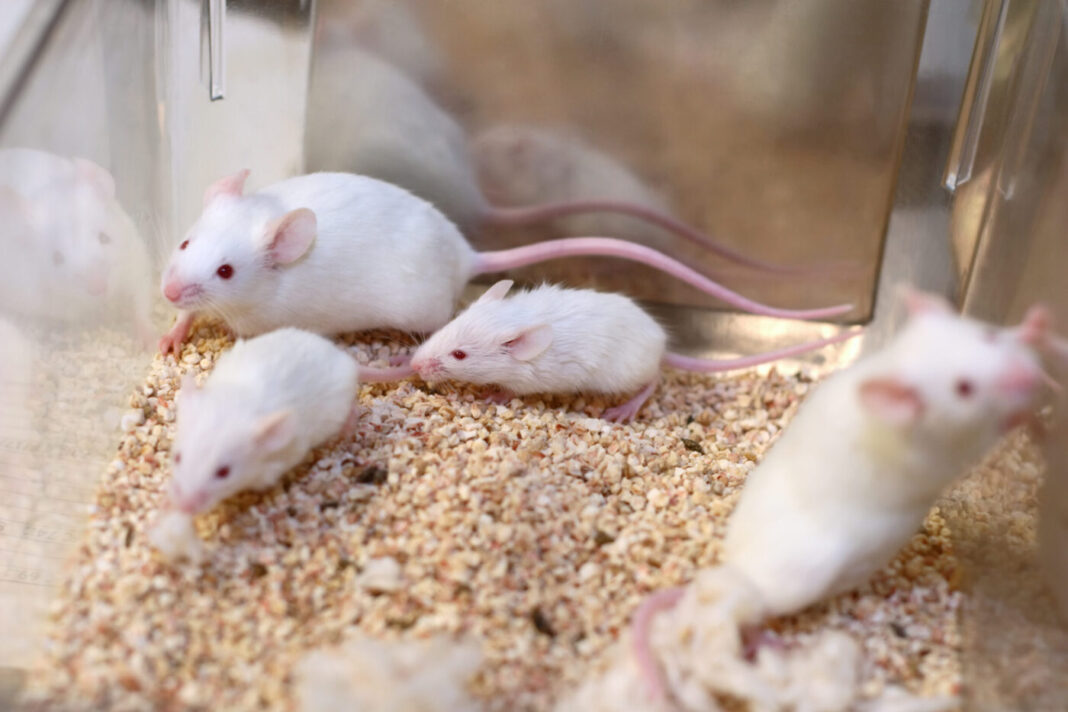Scientists at Cornell University report that they have developed a method for studying the neuroscience of motor control in mice—by focusing on a mouse’s tongue when it licks a waterspout. The technique incorporates high-speed cameras and machine learning in a tractable experimental setup that opens the door for revealing mysteries of how the motor cortex works, and understanding the neural basis of related disorders like Parkinson’s disease, according to the research team.
“We now have an approach in a mouse where we can bring all the tools of modern neuroscience to bear on this really classic problem of motor control,” said senior author Jesse Goldberg, PhD, associate professor of neurobiology and behavior, and who, along with his colleagues, published their study (“Cortex-dependent corrections as the tongue reaches for, and misses, targets“) in Nature.
“Precise tongue control is necessary for drinking, eating, and vocalizing. However, because tongue movements are fast and difficult to resolve, neural control of lingual kinematics remains poorly understood. Here we combine kilohertz-frame-rate imaging and a deep-learning-based neural network to resolve 3D tongue kinematics in mice drinking from a waterspout,” write the investigators.
“Successful licks required corrective submovements that—similar to online corrections during primate reaches—occurred after the tongue missed unseen, distant or displaced targets. Photoinhibition of anterolateral motor cortex impaired corrections, which resulted in hypometric licks that missed the spout. Neural activity in anterolateral motor cortex reflected upcoming, ongoing and past corrective submovements, as well as errors in predicted spout contact.
“Although less than a tenth of a second in duration, a single mouse lick exhibits the hallmarks of online motor control associated with a primate reach, including cortex-dependent corrections after misses.”
The field of motor control neuroscience has made advancements almost entirely through studies of monkeys reaching for things, Goldberg said. His lab tried for years to develop a mouse model for much faster and more malleable experiments but found too many constraints in getting mice to reach with their limbs; mice lack the necessary biomechanics and nature for such movements.
Tejapratap Bollu, PhD, a former graduate student in Goldberg’s lab who was working on a different project that involved mice licking a waterspout, made a discovery that led to the new technique. The water-spouts were fitted with contact sensors, but often, the tongue would miss the target. Bollu, now a postdoc at the Salk Institute, “noticed with his careful eye that [the mice] were actually sticking their tongues out and looking” for the spout, rather than licking as had been assumed, Goldberg said.
The movement in mice, which occurs on time scales of close to 100 milliseconds per lick, is analogous to a monkey reaching and making adjustments with its hand and activates the motor cortex in a surprisingly similar manner, the researchers found.
Using high-speed cameras, the researchers could observe the tongue reaching for the waterspout, just as a human reaches for an object. They could also move the waterspout, which forced a miss and an immediate correction. At the same time, genetically engineered mice allowed the researchers to use light to turn different parts of the brain on and off while the animals were drinking.
The researchers were able to use brain activation experiments to zoom in on the anterolateral motor cortex.
“The electrical signals there exhibited remarkable similarity to the types of electrical signals people observed in primate reach tasks,” noted Goldberg. “Now we can do experiments that have never been done before,”
Cornell Neurotech, a joint initiative between the Colleges of Arts & Sciences and Engineering, has developed technologies that make it possible to record thousands of neurons in an animal at once, for example. In next steps, Goldberg plans to use these tools to characterize for the first time the origins of pathogenic brain signals in neurological disorders, such as Parkinson’s disease.



